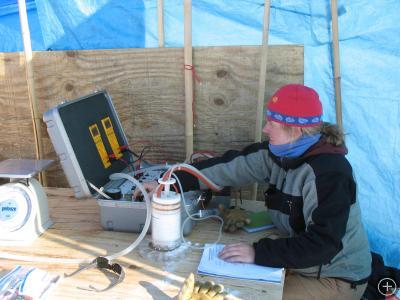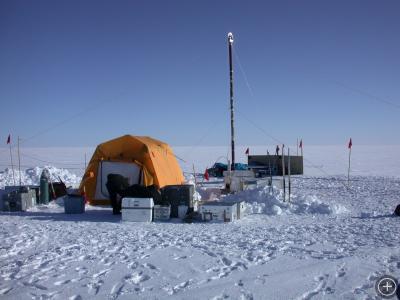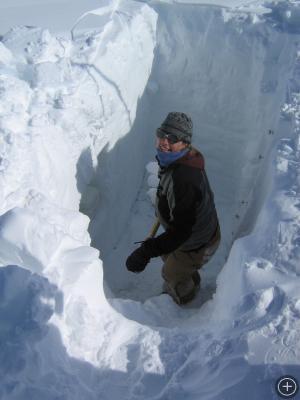
Analyzing ice crystals for clues about climate change
In polar areas, snow falls and rarely melts, resulting in layers that build up over time. In Greenland, layers of snow have accumulated over hundreds of thousands of years to a depth of two miles. Snow falling at the surface starts to change almost as soon as it lands on the ground: Smaller snow grains begin to fuse together into larger, more rounded crystals. These changes in the snow occur at the surface, and at depth, until the snow becomes compressed into ice from the weight of the snow above.
A wealth of information about past climate is contained in the snow itself and in the air bubbles trapped in the spaces between the particles of snow. To fully understand this climate record, scientists need to understand the changing snow. Research scientist and engineer Zoe Courville is working in Greenland as part of an ongoing effort to understand how snow layers evolve. She’s studying snow pits—excavations that scientists dig to reveal the different layers in the snowpack.
During the summer of 2008, Zoe’s research took her to Summit Camp, the top of the Greenland ice cap.
In the summer of 2009, Zoe worked at Greenland’s NEEM camp in northwest Greenland. The NEEM project is a large international ice-core drilling project that is part of the International Polar Year (IPY) and is led by Dorthe Dahl-Jensen of the Niels Bohr Institute in Denmark. The goal of the project: to reach ice that is at least as old as the Eemian period, which ended 115,000 years ago. The Eemian is the last interglacial period, a warm period in between the ice ages, before the present one we are experiencing. Understanding the climate of the Eemian might provide clues for our future climate. For example, during the Eemian period, temperatures in Greenland were 3 to 5 degrees Celsius (more than 5° F) warmer than they are now, temperatures that Greenland could once again reach in the not-so-distant future.













